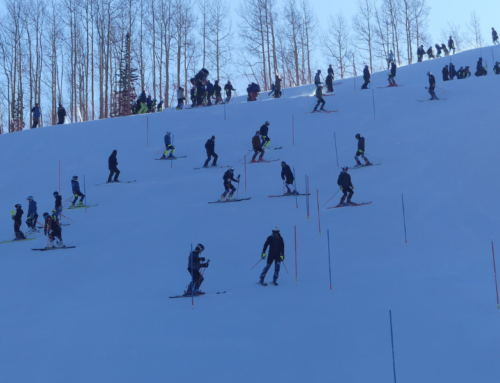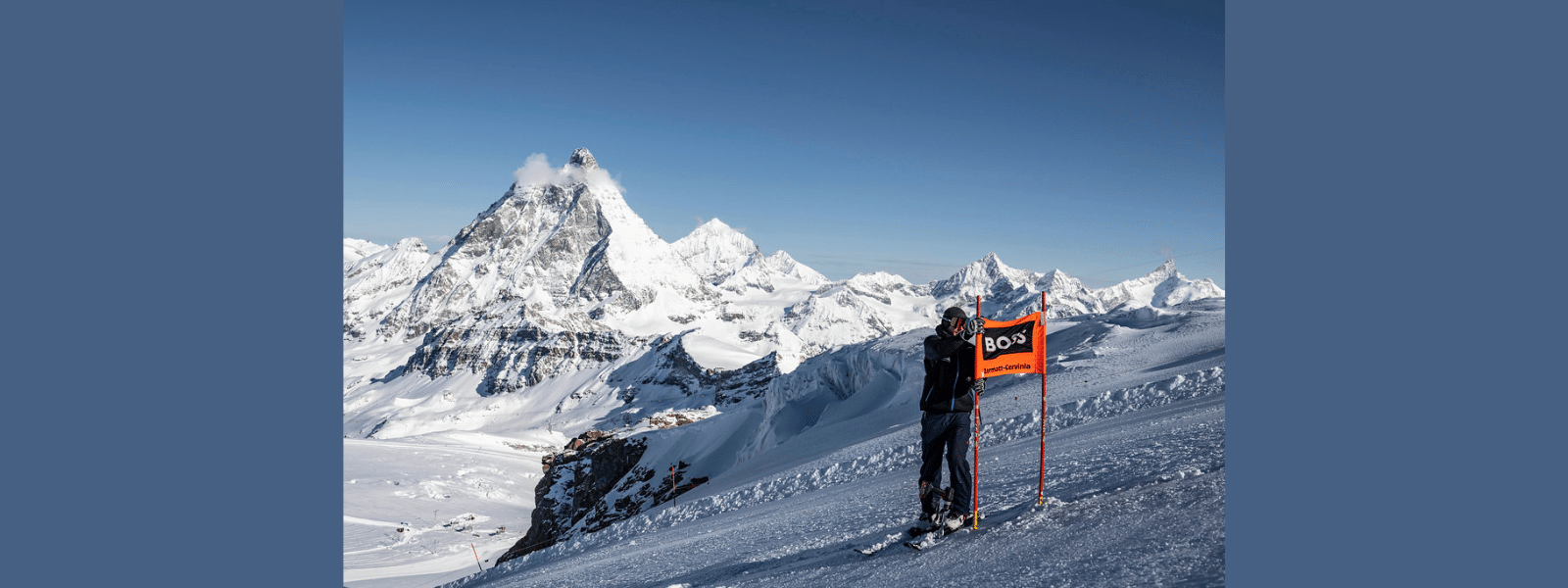Nordic Worlds: We really are leading medals count
The U.S. Ski Team’s Tom Kelly has been around nordic skiing for decades, as a journalist, photographer and publicist, from the jumping team’s old training site in his hometown of Madison, WI to the early days of the cross country World Cup and now with the U.S. Ski Team. He reflects on the opening days of the FIS Nordic Ski World Championships in Liberec, Czech Republic where the USA is the talk of the nordic world.
In my hand is a piece of paper. It’s the Medal Standings from the Nordic Ski World Championships. In the number one spot is the USA with four medals including three gold. Norway is in second – but a relatively distant second with just one gold. All of this with nearly half (eight of 20) of the events completed. Yes, it’s for real.The U.S. Ski Team’s Tom Kelly has been around nordic skiing for decades, as a journalist, photographer and publicist, from the jumping team’s old training site in his hometown of Madison, WI to the early days of the cross country World Cup and now with the U.S. Ski Team. He reflects on the opening days of the FIS Nordic Ski World Championships in Liberec, Czech Republic where the USA is the talk of the nordic world.
In my hand is a piece of paper. It’s the Medal Standings from the Nordic Ski World Championships. In the number one spot is the USA with four medals including three gold. Norway is in second – but a relatively distant second with just one gold. All of this with nearly half (eight of 20) of the events completed. Yes, it’s for real.
Those of us with nordic skiing backgrounds, as fans or athletes, have long adjusted to being on the other end of the sheet of paper – or not being on it at all. In fact, prior to this century there were only two U.S. World Championship nordic medals – Anders Haugen’s ski jumping bronze at the 1924 Olympics/Worlds in Chamonix and Bill Koch’s 1982 bronze in the 30K Worlds in Oslo. That changed in 2003 when Johnny Spillane won the nordic combined sprint in Val di Fiemme, and in 2007 when Billy Demong won silver in the sprint in Sapporo.
So that’s four medals in history. And now four medals in three days in Liberec.
There are lots of benchmarks you can point to as the catalyst for this medals avalanche, but few real explanations other than great athletes, an outstanding program and hard work.
The medals onslaught was somewhat ignited when Todd Lodwick and Billy Demong put themselves into medal position in Thursday’s nordic combined mass start before winds forced a postponement of the jump. Or, you could point to Lindsey Van’s aching knee which forced her to patiently sit out practice jumps and trial rounds for most of the season – giving her the ability to intensely focus on her two competition jumps at every event. And many of us recall the rumors we started to hear last summer about Todd Lodwick returning after two years in retirement. ‘Is he crazy,’ we thought? Until you took one look at him and saw the fire in his eyes and the leanness of his body. He was back to win and his teammates welcomed him home.
Some also point to the late journalist Paul Robbins, who died a year ago this weekend. If heaven has wireless, he’s surely watching the action and smiling.
Friday was a ‘pinch me’ day at Worlds – a pair of golds and a near miss by Kris Freeman in the 15K classic. But, Sunday was different. Lodwick and Demong were now targets.
Generally, Billy Demong isn’t all that concerned about making up 36 seconds and coming from 12th to win. He’s shown that time and time again. But he was worried on Sunday – worried about catching his teammate! And worried about who would be able to suck the backs of Todd’s skis and stay in contention.
It was easy to look at the cross country start list and see which of the jumping specialists would drop back. And the field caught a break when Norway’s Magnus Moan blew his jump, going only 82.0 meters and standing 44th – nearly three minutes back. Austria’s Bernhard Gruber and Christoph Bieler were sure to drop back, and they did. Norwegian Jan Schmid was a better jumper, but a good enough cross country skier to stick with Lodwick. Which he did.
The wild card was really World Cup leader Anssi Koivuranta, who was just two seconds behind Lodwick. He could have, and should have, been a shoe-in for a medal. But Demong and Lodwick had something on the Finn. While he was grunting along on the World Cup circuit from Whistler to France to Austria to Germany and on to Liberec, Lodwick and Demong were resting and training back home. Koivuranta faded in the final kilometer, unable to keep up with Lodwick and Schmid.
The U.S. athletes had been strategic in their approach to Worlds, much like Demong was in 2007. And it’s working!
Demong, meanwhile, has fond memories of the Liberec course. It was here, as a teenager, in 2002 that he won his first World Cup. On the final lap as the course reached the finish, Demong passed hometown hero and jump leader Pavel Churavy and Austrian legend Felix Gottwald to take a narrow 1.9 second victory. Sunday, it wasn’t for a win, but it was for a World Championship bronze when Demong passed Koivuranta to win his second career medal.
To say nordic combined is a niche sport is an understatement. You can be sure that every American fan already knows the news. But while it may not be a mainstream sport, it is one of the most interesting and exciting of all Olympic events. In today’s format, it requires athletes to use explosive strength to takeoff from the jump, aerodynamics to fly through the air and agility to softly land. Then, a few hours later, sprint at top speed for ten kilometers – always chasing the jump leaders ahead. Small things make a difference – Lodwick’s jump landing, Demong’s keen ability to pick through the pack.
And it takes Team! Demong’s fast pace in the mass start cross country helped give Lodwick a strong position to win in the jump. And while Lodwick may have sucked Schmid along for a medal, he also helped put Koivuranta down to fourth. Tactics and strategy play a big role.
Seven years ago the U.S. Nordic Combined Team came within an eyelash of a team medal at Soldier Hollow during the 2002 Olympics. This Thursday it’s showtime again. Demong and Lodwick will team with 2003 World Champion Johnny Spillane, plus a fourth, to challenge in the team event. It will be a tough, tough battle. And, unlike in the past, the U.S. athletes will have those targets on their backs.
Steamboat Springs’s Tom Steitz helped usher in the modern day of nordic combined to America. Many didn’t know exactly what he was doing, but they knew he was doing something right. He created excitement in Steamboat, and across America, for nordic combined. He recruited athletes, creating what he called the “Blob Squad.” He shepherded the program along and brought international notoriety when Spillane won in 2003.
And while he’s retired from coaching, he has remained its biggest fan. He hadn’t planned to watch the jumping distances scroll across the data feed – until Todd’s wife Sunny gave him a call in the middle of the night. And during the cross country race, he watched the splits scroll onto his screen and interpreted them to Sunny on the phone.
Steitz, too, doesn’t have the silver bullet of an explanation. But he doesn’t care. Like everyone, he just wants to savor the moment. Three incredible young men, Johnny Spillane, Billy Demong and Todd Lodwick, are forever etched in history as the best in the world in their sport.





















